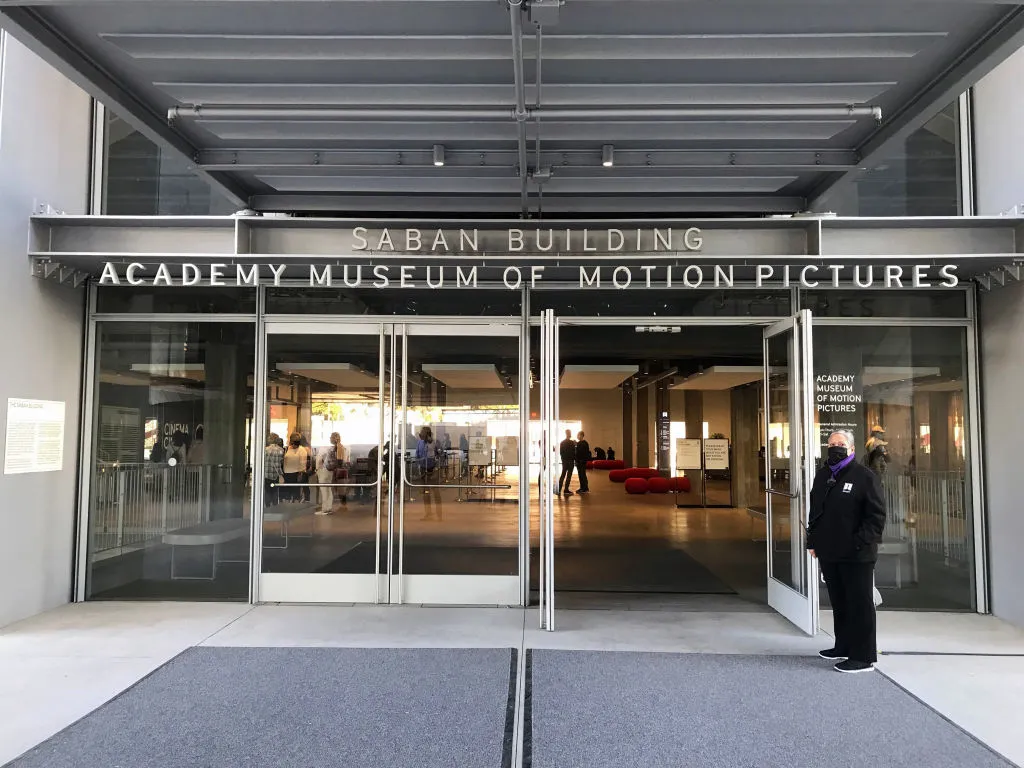
The Academy Museum of Motion Pictures has been a commercial hit and a critical misfire.
In an era of declining Oscar telecast ratings, the new institution’s robust ticket sales — there have been nearly 2 million visitors since it opened in September 2021 — have turned it into a major Los Angeles draw, bolstered the Academy’s coffers and prompted inaugural museum director Bill Kramer’s ascension to CEO of AMPAS, the parent organization. Yet except for Regeneration, its lauded deep-dive showcase of Black American filmmaking through the early 1970s, the exhibits have been discourse duds, more fit for the local tourist attraction it is than the world-class institution it aims to be.
There’s been exuberant fan service (a sprawling tribute to Japanese animation master Hayao Miyazaki) and dutiful minor-key spotlights on illustrious yet lower-profile luminaries like editor Thelma Schoonmaker and director Oscar Micheaux. Then there was the museum’s debut survey of the film industry, which came in for a drubbing for what was perceived to be its anxious, overcompensating political correctness, coupled with a blinkered vision that paid little mind to the Hollywood studio system and its founders. Movie historian Sam Wasson’s pan was titled “Little Gold Men, Big White Guilt.”
This spring, the museum’s attempt at a correction, a look at the Jewish immigrant moguls who started the movie business called Hollywoodland, was met with blowback from a group of aggrieved entertainment insiders including mogul Casey Wasserman, producer Lawrence Bender, actor David Schwimmer and writer Amy Sherman-Palladino. In a letter, they called the exhibit “antisemitic” for its focus on its subjects’ well-documented if unappealing biographical facts, including misogyny and rapaciousness. Director Alma Har’el, who’d served on the museum’s inclusivity committee, resigned after viewing the exhibit.
Others countered the criticism. The New Yorker writer Michael Schulman, who’s reported on the Oscars and the movie business, argued that “their legacies are extremely mixed,” and “to shy away from that is to take the Ron DeSantis school of history.” Nevertheless, the museum has since apologized for “using phrasing that may unintentionally reinforce stereotypes” and announced an outside group of experts, including the current and former heads of several Jewish-themed museums, to advise on promised exhibit changes, some of which have since been implemented. “Standing in front of the expurgated version, I felt sad and angry,” Schulman wrote after visiting the revised show. (Neal Gabler, who authored the definitive book on the Jewish founders, An Empire of Their Own, consulted on the initial presentation of Hollywoodland.)
This latest controversy highlights the overarching issue at the Academy Museum. Its mission isn’t just to celebrate filmmaking but to “contextualize and challenge dominant narratives around cinema.” In other words: to question what’s still only a century-old medium with the same seriousness that’s long been curatorially afforded to far more established arts and sciences. Yet right now it lacks the capacity to fulfill that mandate.
I’ve long covered nonprofit governance for The Hollywood Reporter and have chronicled the genesis and development of the Academy Museum since before its groundbreaking. Exhibition experts I spoke to a decade ago already zeroed in on the fundamental tension between the institution’s ostensible ambitions and its management of inherently conflicted constituencies. Even then, they were concerned how the museum’s structural closeness to Hollywood might hamper its credibility. “It’s a spider’s web,” USC Cinematic Arts Librarian Sandra Garcia-Myers observed at the time. “Will they ask the tough questions? And if not answer them, at least discuss them? You’ll be able to tell within a year — even just from the exhibitions they open with — as to whether it’s a serious curatorial mission or a sort of Disney ride.”
AMPAS knows how to nurture and protect rigorous institutions. Proof can be found in its Pickford Center for Motion Picture Study, a massive film print archive, and its Margaret Herrick Library, a world-renowned repository of Hollywood documentation.
But its nascent museum — which benefits from a highbrow location on LACMA’s campus — panders. Perhaps worse, it appears afraid to provoke. This is unfortunate yet manageable when turning out crowd-pleasers like the upcoming sci-fi show “Cyberpunk.” This is fatal when it’s meant to do far more than that, serving as a crucial and unflinching intellectual voice, especially as the embattled film world grapples with its existential crises, from theatrical collapse to AI encroachment.
What’s missing at the museum now that it’s in operation is the curatorial assurance that arises when there’s appropriate stewardship. Its 28-member board of trustees is full of heavyweights, a mix of admired names in entertainment (Miky Lee, Tom Hanks, Jim Gianopulos) and business professionals who can be counted on to help with fundraising and handle political headaches. What’s conspicuously absent are any figures with seasoned backgrounds running significant, ambitious museums — save for token seats held by Kramer, as well as the recently appointed museum director, Amy Homma. Neither of them was made available to The Hollywood Reporter to discuss their endeavor; each possesses no curatorial experience.
The board room needs respected individuals from the museum realm who can better assert independence, which in this case means being a bulwark against ideological and corporate interests. (An exhibition center about the movie business is bound to face private pressures and public tests over its presentation of material pertaining to the companies who fund it.) Expanding the number of trustees, or augmenting the extant group, would improve the situation.
The Academy Museum undoubtedly gains from the aegis of AMPAS as well as its members and affiliates. Yet it won’t be able to deliver on its stated aspirations until it properly insulates itself from the entity that birthed it.

